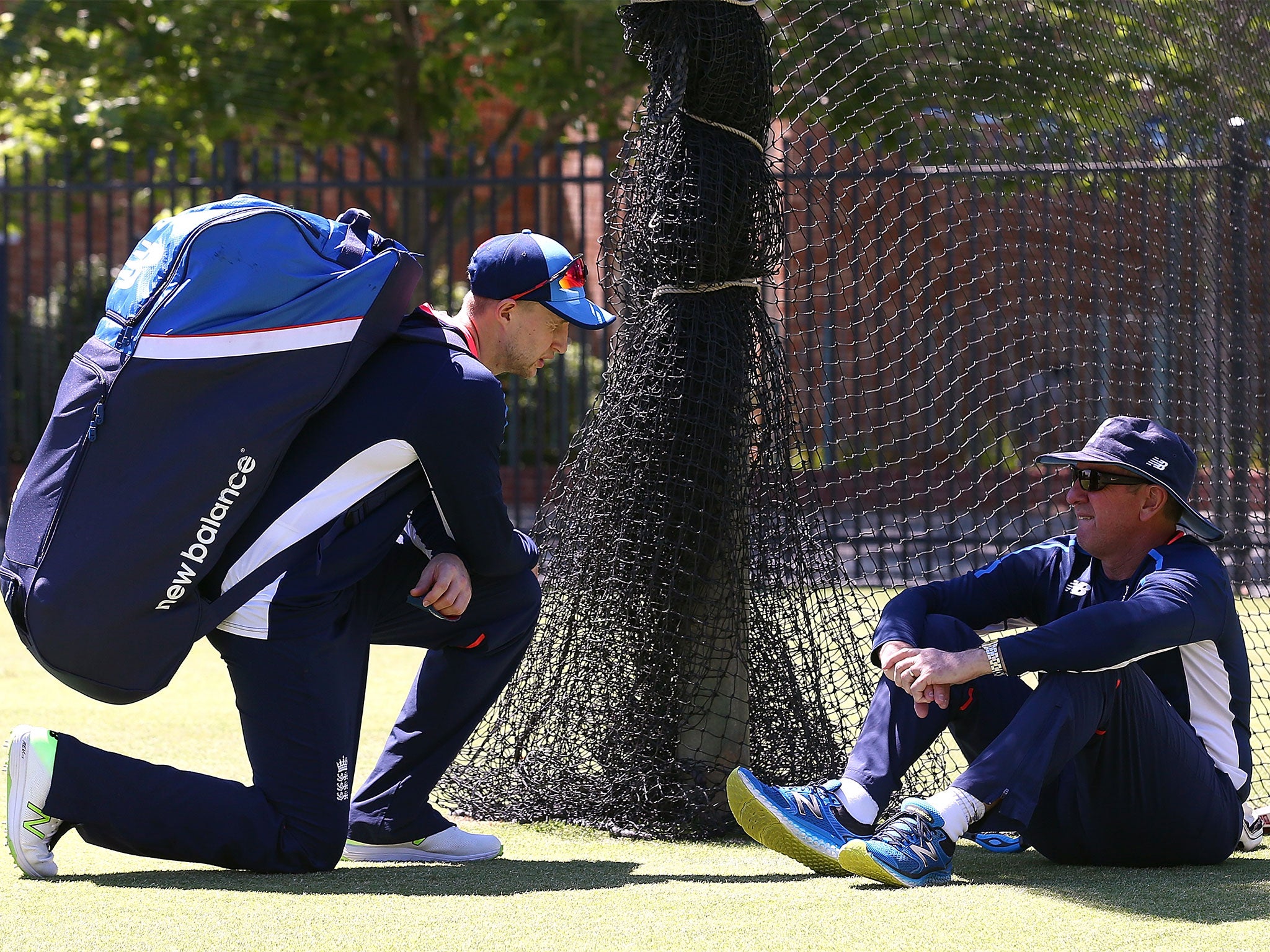Ashes 2017: England's arch-planners head into uncontrollable Adelaide knowing that fate, not formulae, could decide the second Test
Planning everything to the nth degree is all well and good, but a day-night Test with a strange ball in unfamiliar surroundings means Joe Root may need to lean on Lady Luck

It is lunch on day three at Brisbane, and England have restricted Australia to 213-7, and just the tail to wrap up. The lead is 89 and if England can prise out the last three wickets cheaply, they can seize a decisive advantage.
Yet when the teams emerge for the afternoon session, with the ball only eight overs old, it is not James Anderson and Stuart Broad who resume, but Chris Woakes and Jake Ball.
Neither bowler manages to maintain the required pressure, and by the time Broad and Anderson return to the attack an hour later, Steve Smith and Pat Cummins have passed 250 and are on the way to surpassing England’s total.
Ashes First Test - in pictures
Show all 33After the game, which Australia won by 10 wickets, England captain Joe Root admitted that resting Anderson was a mistake. “It was gut feel at the time,” he said. “Jimmy had bowled a lot of overs, and we wanted to make sure that those bowling at a new bat were fresh. Unfortunately, it was the wrong decision.”
It may have been just one of the dozens of decisions that a Test captain is called upon to make every day, but in a way it encapsulated a specific danger facing this England side as they go into the second Test at Adelaide. Anderson was, essentially, kept out of the frontline in order to preserve his legs for the rest of the series.
Yet England are already 1-0 down in the series, and Root’s foresight now looks suspiciously like over-caution. Along with bowling coach Shane Bond, Root has spent weeks in advance of this series devising bowling plans to every Australian batsman: not just a Plan A, but a Plan B and a Plan C and very possibly more besides. Where to bowl when they are new to the crease. Where to bowl when they get set. Where to bowl with the new ball, where to bowl with the old.
But the hazard that a team faces when it maps out every possible scenario is that it forgets to play the current match situation. And this, ultimately, is the conundrum England need to solve. How do you keep your instincts sharp when everything has seemingly been prepared in advance?
Broad alluded to this after day three at Brisbane. “We wanted to go into the Test series with quite clear plans,” he said. “What do we do if someone got to 30? How do we start to each batsman?
“So there’s actually not too much thinking on our feet out there. We’ve done a lot of the research. We know where each batsman seems to score their runs. And a lot of the plans have worked fantastically well. Any time you bowl Australia out in Australia for just over 300, you’d take that every day of the week.”

It was intended, you would imagine, as an endorsement. But is it really healthy for a team not to be thinking on its feet? England’s plans to Smith, for example, were intricate, elaborate and ultimately a failure. “We tried a number of different plans to him,” Root admitted. “None worked on that occasion, but we made him work extremely hard for his runs and kept him very quiet by his standards. By doing that it built pressure at the other end and we took wickets.”
If England’s strategy to Smith is to take wickets at the other end, then you suspect it could be a long series for them. But here, as in other areas, they have perhaps been guilty of looking a little too far ahead. A lot of the talk coming out of the England camp in advance of the series was about taking the Australian fast bowlers into “third and fourth spells”: tiring them out, making them graft, running them into the ground.
Yet the control Nathan Lyon was able to exert put paid to that plan. The likes of Alastair Cook have not stayed in long enough to see a second spell, let alone a third or a fourth. And by the end of the Brisbane Test, it was the England bowlers who looked in dire need of a rest. Once again, in focusing on the outcome, England took their eye off the process.
Speaking on Thursday ahead of the second Test, Root defended his side’s preparations. “You have these plans in place, but it doesn’t mean you have to use them for the whole session or all the time,” he said. “You can tinker with them and change things around, move with the game. It wasn’t that we just had something in place and that would be it.
“It’s just something that’s very clear for any bowler: if they’re under pressure, it’s something they can go to. If we want to change something, we’ll change it. I think it’s good for everyone to go into a battle with each individual player and have an understanding of how we can get them out, rather than waiting five overs before that’s the case.”
There’s nothing wrong with a plan, of course. Andrew Strauss plotted England’s last victory in Australia with a general’s diligence. But defeat in Brisbane has left them - already - in a must-win situation. And a day-night Test in Adelaide is hardly the most controllable of scenarios - an unfamiliar setting, an unfamiliar ball, and the lottery of who gets to bat under lights.
Here, then, is perhaps the ultimate irony: a tour that has been schemed and prepared to the nth degree will ultimately stand or fall on the winds of chance. Root must hope he feels lucky.
Subscribe to Independent Premium to bookmark this article
Want to bookmark your favourite articles and stories to read or reference later? Start your Independent Premium subscription today.



Join our commenting forum
Join thought-provoking conversations, follow other Independent readers and see their replies
Comments